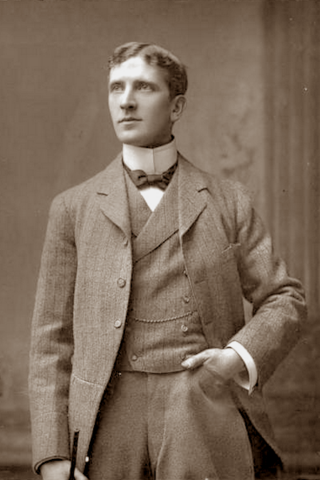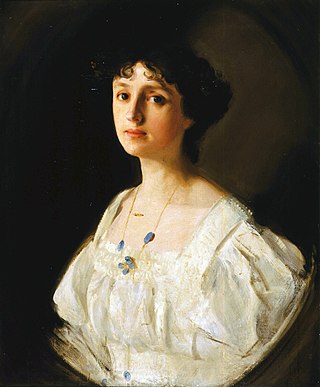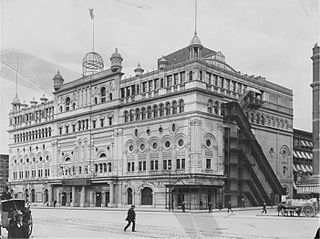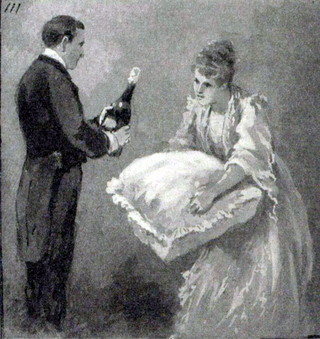
Sir Arthur Wing Pinero was an English playwright and, early in his career, actor.

Benjamin Webster was an English actor, the husband of the actress May Whitty, and father of the actress and director Margaret Webster. After a long career on the English stage, Webster, together with his wife, moved to Hollywood, where they made numerous films in their later years.

Dame Irene Barnes DBE, known professionally as Irene Vanbrugh, was an English actress. The daughter of a clergyman, Vanbrugh followed her elder sister Violet into the theatrical profession and sustained a career for more than 50 years.

Dame Florence Lilian Braithwaite was an English actress, primarily of the stage, although she appeared in both silent and talkie films.
Maurice Elvey was one of the most prolific film directors in British history. He directed nearly 200 films between 1913 and 1957. During the silent film era he directed as many as twenty films per year. He also produced more than fifty films – his own as well as films directed by others.

The Olympia Theatre, also known as Hammerstein's Olympia and later the Lyric Theatre and the New York Theatre, was a theater complex built by impresario Oscar Hammerstein I at Longacre Square in Manhattan, New York City, opening in 1895.

Donald Esme Clayton Calthrop was an English stage and film actor.
Hayford Hobbs was a leading British film actor of the silent era and later became a film director. He was born in London, England, in 1891. He made his first screen appearance in the 1915 film The Third Generation and appeared in his last film High Treason in 1929. The following year he directed his first film, a documentary about London.

Girls Will Be Boys is a 1934 British comedy film by French director Marcel Varnel and starring Dolly Haas, Cyril Maude and Esmond Knight. It is based on The Last Lord, a play by Kurt Siodmak. The film was shot at Elstree Studios with sets designed by the art director Cedric Dawe. Haas made this, her first English-language film, following a Nazi-led riot at the premiere of her previous film Das häßliche Mädchen. The riots protested the male lead, Max Hansen, who was supposedly "too Jewish." In 1936, Haas fled Germany altogether.

Margaret Bannerman was a Canadian actress. She is known for her work in the English films The Gay Lord Quex, Lady Audley's Secret and Hindle Wakes. She had a successful career on stage, appearing in revues and light comedy.
The Woman Who Was Nothing is a 1917 British silent crime film directed by Maurice Elvey and starring Lilian Braithwaite, Madge Titheradge and George Tulley. It was based on a novel by Tom Gallon. The screenplay concerns a female ex-convict who steals the identity of a dying heiress.

The Gay Lord Quex is an 1899 comedy play by the British playwright Arthur Wing Pinero. It depicts the vicissitudes of a reformed philanderer attempting to embark on monogamy. The original production provoked controversy, some critics finding the plot at best questionable and at worst immoral.
The Gay Lord Quex may refer to:
Justice is a 1917 British silent crime film directed by Maurice Elvey and starring Gerald du Maurier, Hilda Moore, and Lilian Braithwaite. It was based on the 1910 play Justice by John Galsworthy. It is not known whether the film currently survives, which suggests that it is a lost film.
General Post is a 1920 British silent drama film directed by Thomas Bentley and starring Douglas Munro, Lilian Braithwaite and Joyce Dearsley. It was based on the play General Post by J. E. Harold Terry in which Lillian Braithwaite had appeared when it premiered at the Haymarket Theatre in March 1917.
Dombey and Son is a 1917 British silent drama film directed by Maurice Elvey and starring Norman McKinnel, Lilian Braithwaite and Hayford Hobbs. It is an adaptation of the 1848 novel Dombey and Son by Charles Dickens. It is unknown if any copy of the film exists.
Masks and Faces is a 1917 British silent biographical film directed by Fred Paul and starring Johnston Forbes-Robertson, Irene Vanbrugh and Henry S. Irving. The film depicts episodes from the life of the eighteenth-century Irish actress Peg Woffington. It is based on the 1852 play Masks and Faces by Charles Reade and Tom Taylor.
Because is a 1918 British silent drama film directed by Sidney Morgan and starring Lilian Braithwaite, Ben Webster and George Foley. A father locks his daughter up when she refuses to marry the man he has chosen as her husband.

The Gay Lord Quex is a lost 1919 American silent comedy film directed by Harry Beaumont and starring Tom Moore, Gloria Hope, and Naomi Childers It is based on the 1899 play The Gay Lord Quex by the British writer Arthur Wing Pinero.

Ada Ferrar was a British actress of the late Victorian and Edwardian eras.










